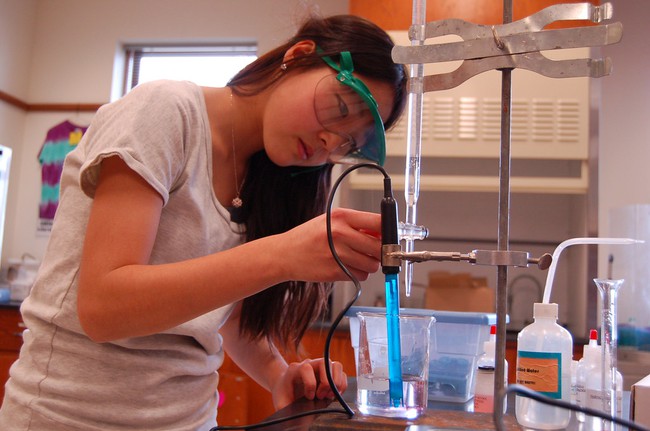Green Chemistry Videos (7 results)
The goal of green chemistry is to make sure that chemical processes and products are produced in ways that reduce or eliminate the use and creation of toxic material. It encourages the use of as little energy and as few materials as possible and emphasizes using renewable resources. The idea is to be environmentally friendly and sustainable from the beginning of the process rather than figure out how to treat waste after a product is made or discarded.

Green chemistry can be applied to improve existing products or processes. For example, green chemistry is being applied to clothing manufacturing to make the creation of synthetic fabrics more environmentally friendly and ensure that the dyes used to color all clothes use fewer water resources and do not pollute. The same green chemistry principles can be used to make new products like biodiesel made from plants, to replace diesel made from fossil fuels.
The twelve principles of green chemistry provide a framework for scientists and engineers to follow when designing new products or improving existing materials and processes.
- Waste prevention: Instead of treating or cleaning up waste in the end, prevent it from being made.
- Atom economy: Incorporate as much of the starting materials (atoms) into the final product as possible.
- Less hazardous chemical synthesis: When creating complex compounds from simpler materials (chemical synthesis), focus on using and creating materials that do not harm humans or the environment.
- Design safer chemicals: When designing chemical products, make ones that are effective (do the job intended) but have little or no toxicity.
- Safer solvents and auxiliaries: The use of chemicals like solvents, separation agents, etc., that help a chemical process should be either eliminated or, if that isn't possible, made as environmentally friendly as possible.
- Design for energy efficiency: Run chemical reactions at room temperature and pressure whenever possible as it takes extra energy to heat, cool, or alter pressure.
- Use renewable feedstocks: As much as possible, raw materials (also called feedstocks) should come from renewable sources instead of ones that can be depleted. Examples of renewable feedstocks include agricultural products and waste from other processes.
- Reduce derivatives: Derivatization, like using blocking or protecting groups or any temporary modification to a compound, should be avoided if possible. Creating derivatives uses additional reagents and may create more waste.
- Use catalysts: Minimize waste by using catalytic reactions. Catalysts are effective in small amounts and can carry out a single reaction many times. They are preferable to stoichiometric reagents, which are used in excess and carry out a reaction only once.
- Design for degradation: Design chemical products to break down to harmless substances after use so that they do not accumulate in the environment.
- Real-time pollution prevention: Include in-process, real-time monitoring and control during synthesis to minimize or eliminate the formation of byproducts (unwanted products).
- Minimize the potential for accidents: Choose chemicals and their physical forms (solid, liquid, or gas) to minimize the potential for chemical accidents, including releases to the environment, explosions, and fires.











